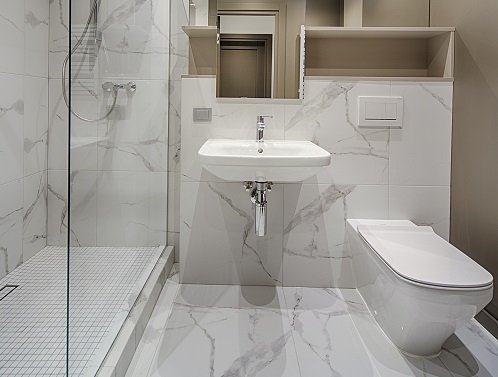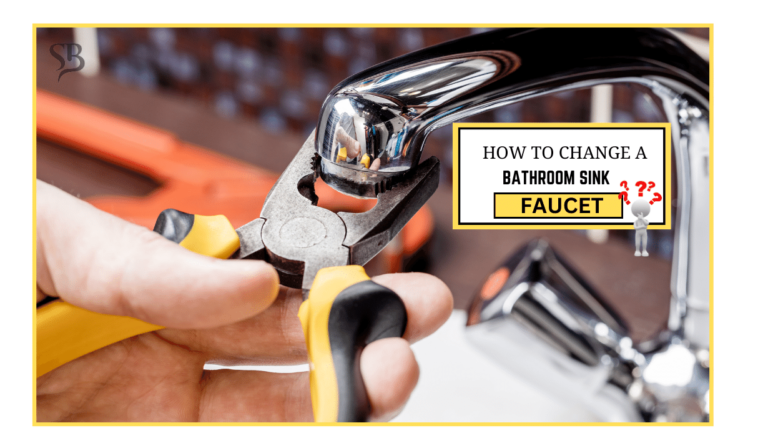The question of whether a toilet and sink can share the same drain is one that many homeowners ask themselves. The answer is yes, it is possible for a toilet and sink to share the same drain. In fact, it is a common practice in many homes and buildings.
The plumbing system in a building is made up of a network of pipes and fixtures that work together to remove waste and water from the building. The main drain pipe is the largest pipe in the system and is responsible for carrying waste and water away from the building. From this main drain pipe, smaller pipes connect to fixtures such as toilets, sinks, showers, and tubs.
In a typical bathroom, the sink and toilet will connect to the same drain pipe. This is because both fixtures produce waste and water that needs to be removed from the building. However, there are some considerations that need to be taken into account when installing a toilet and sink on the same drain line.
Factors to Consider When Sharing a Drain Line
Here are the factors to consider when sharing a drain line between your toilet and sink or bathtub:
1. Drain Size
The size of the drain pipe is an important consideration when installing a toilet and sink on the same drain line. The drain size needs to be large enough to handle the waste and water produced by both fixtures. In most cases, a 2-inch drain pipe is sufficient for both a toilet and sink.

2. Ventilation
Proper ventilation is essential for a plumbing system to function correctly. Each fixture needs to be vented to allow air into the drain line, which helps prevent clogs and ensures that waste and water flow smoothly. When installing a toilet and sink on the same drain line, it is important to ensure that each fixture is properly vented.
3. Slope
The slope of the drain line is another important consideration. The drain pipe needs to have a slope of at least 1/4 inch per foot to ensure that waste and water flow away from the building. If the slope is too steep or not steep enough, it can lead to clogs and other plumbing issues.
4. Trap Size
Each fixture needs to have its own trap, which is a curved section of pipe that prevents sewer gas from entering the building. The size of the trap is important, as it needs to be large enough to prevent clogs but small enough to allow waste and water to flow freely.
5. Water Pressure
The water pressure in a building can affect the plumbing system, especially if there are multiple fixtures connected to the same drain line. If the water pressure is too low, it can lead to clogs and other plumbing issues. If the water pressure is too high, it can cause damage to the fixtures and pipes.

Why Should You Use The Same Drain For Your Sink And Toilet?
While it’s possible to connect a sink to a shower drain, some homeowners may consider connecting their sink to their toilet drain instead. But why would you want to do this? There are a few reasons why using the same drain for your sink and toilet can be beneficial.
1. Saves Space
If you have a small bathroom, combining the plumbing for your sink and toilet can free up some much-needed floor space. This can make your bathroom feel more open and less cluttered.
2. Saves Money
Connecting your sink to your toilet drain can be less expensive than installing a separate drain for the sink. This can be particularly beneficial if you’re on a tight budget.
3. More Environmentally Friendly
When you connect your sink to your toilet drain, the water from your sink can be used to fill your toilet’s tank instead of using fresh water. This can help conserve water and reduce your environmental impact.
However, there are some potential drawbacks to using the same drain for your sink and toilet. If there’s a blockage in the drain, it can affect both your sink and toilet. Additionally, if there’s a leak in the drain, it can cause water damage to both fixtures.
Ultimately, whether or not to use the same drain for your sink and toilet depends on your specific needs and preferences. If you’re considering this option, it’s always a good idea to consult with a professional plumber to ensure that it’s done correctly and safely.

How to Connect a Sink to the Shower Drain
If you’re looking to save some space in your bathroom or simply want to combine the plumbing of your sink and shower, connecting a sink to a shower drain can be a great option. This may seem like a daunting task, but with the right tools and a bit of know-how, it’s a project that you can do yourself. Here is a step-by-step guide on how to connect a sink to a shower drain.
Step 1: Gather Your Tools and Materials
Before you start the project, make sure you have all the tools and materials you need. Here’s a list of everything you’ll need:
- Sink with an overflow
- P-trap
- Drain pipe extension
- Slip joint pliers
- Adjustable wrench
- Silicone caulk
- Teflon tape
Step 2: Remove the Existing Drain Pipe
The first thing you’ll need to do is remove the existing drain pipe for the shower. This will allow you to install a new drain pipe that will connect to the sink. Use slip joint pliers to loosen and remove the old drain pipe.
Step 3: Install the Drain Pipe Extension
Next, install a drain pipe extension. This will allow you to extend the drain pipe to reach the sink. Apply Teflon tape to the threads of the extension to ensure a tight seal. Use slip joint pliers to tighten the extension onto the existing drain pipe.

Step 4: Install the P-Trap
Now it’s time to install the P-trap. This will prevent sewer gases from entering your bathroom and also serve as a way to catch debris that might clog your drain. Place the P-trap under the sink and connect it to the drain pipe extension. Use an adjustable wrench to tighten the connections.
Step 5: Install the Sink
Next, install the sink. Apply a bead of silicone caulk around the rim of the sink and place it in the hole. Tighten the mounting hardware to secure the sink in place.
Step 6: Connect the Sink Drain to the P-Trap
Now it’s time to connect the sink drain to the P-trap. Insert the drain into the sink’s drain hole and tighten the nut underneath the sink. Then, connect the other end of the drain to the P-trap using slip joint pliers.
Step 7: Check for Leaks
Turn on the water and check for leaks. If you see any leaks, tighten the connections until the leaks stop.
Step 8: Finish Up
Finally, finish up by cleaning up any excess silicone caulk or debris. You’re all done!
Wrapping Up
Connecting a sink to a shower drain can be a great way to save space in your bathroom, but it does require some plumbing know-how. If you’re not comfortable doing the job yourself, it’s always a good idea to hire a professional plumber. However, if you’re up for the challenge, following these steps can help you successfully complete the project.







